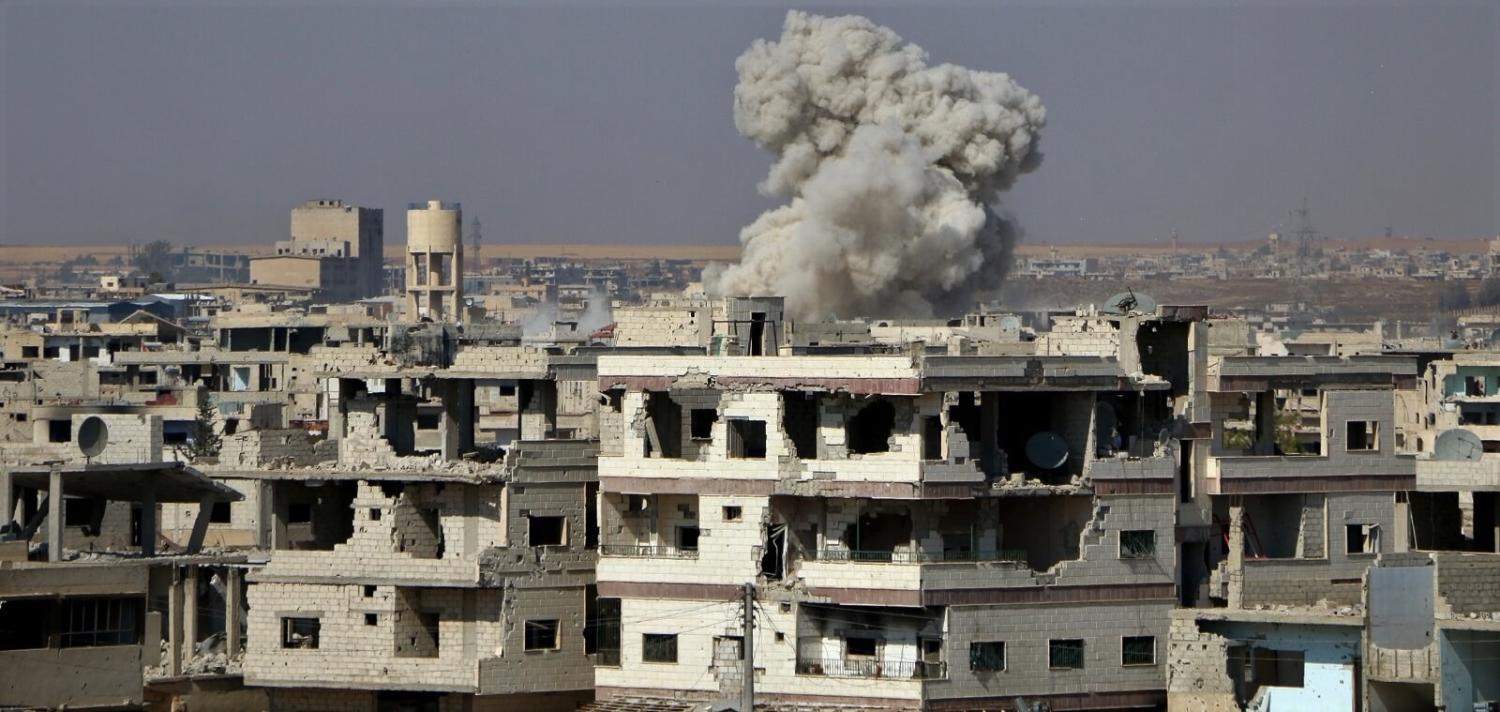More than seven years after Deraa became the cradle of the Syrian uprising, the city has effectively surrendered to regime forces. Its final days reflected a familiar pattern, where Damascus was able to bring heavier firepower to pummel the armed opposition groups into submission. A negotiated solution then stripped the opposition of heavy weapons, allowed those that wished to stay to “reintegrate” into the Syrian state, and bused those that didn’t north to Idlib, where jihadists, Islamists, and opposition fighters are grouped together.
The recapture of Deraa continues the military momentum achieved since the Russians intervened on the side of the regime. With the ISIS-held elements of the Yarmouk refugee camp outside Damascus cleared in May, and the rebel-held areas of eastern Ghouta retaken the month before, the momentum which had partially stalled has picked up again.
The broader strategic utility of a continued US presence, even as part of some ill-defined broader anti-Iran campaign plan, is far less apparent.
Momentum in military campaigns is a difficult thing to stop. With every victory and negotiated settlement that Bashar al-Assad achieves, troops and equipment are freed up to be redeployed elsewhere. But Deraa is not only a symbolic victory but also has potential economic benefits for the cash-strapped Assad regime, as well as for as Lebanon and Jordan.
The Nassib border crossing with Jordan is now back in Damascus’s hands, and there will likely be moves to try to restore the vibrancy of regional land trade routes (possibly including a resurrected Jordan–Syria free trade zone) that existed before Nassib fell to the southern rebel groups. Certainly, Assad’s recent victories have done much to make the main Syrian economic lifeline viable again, although the movement of goods in Syria, like the conflict itself, is not straightforward.
The fall of Deraa also illustrates once again the lack of leverage (and/or interest) US President Donald Trump’s administration has regarding Syria. Deraa was once part of a southern de-escalation zone negotiated between the US, Russia, and Jordan in 2017 and reaffirmed in a meeting between Russian President Vladimir Putin and Trump in November.
Last month, the US State Department warned of “firm and appropriate measures” against Assad if the southern de-escalation zone was violated, and US ambassador to the United Nations Nikki Haley later said that Russia would ultimately bear responsibility for any further escalation. Yet subsequent reports in the mainstream press claimed Washington had signalled to rebel leaders in the south that it should not factor any US military intervention into their decision-making.
Washington still has interests in eastern (notably the enclave of Tanf) and north-eastern Syria. The US presence makes tactical sense in terms of maintaining pressure on remnants of ISIS in the area: an Iraqi airstrike inside Syria in late June that reportedly killed 45 terrorists is evidence of that. But the broader strategic utility of a continued US presence, even as part of some ill-defined broader anti-Iran campaign plan, is far less apparent.
For all the assistance that the US has provided the Kurds and Arab tribal forces in the east, the eastern Syrians and Damascus both know that Syria is not the Trump administration’s number-one priority. And the ease with which Washington turned a blind eye to the takeover of Deraa will simply have confirmed that.
There are many more challenges ahead for Assad before he can even begin to contemplate achieving his stated aim of re-establishing control over all Syrian territory. The first of these could be to take advantage of his recent victory in Deraa and continue on to neighbouring Quneitra, although the problem here lies not so much with bettering the opposition, but doing so in a manner that Israel feels does not threaten its interests.
The Israeli red line has always been the presence of Iranian or Iranian-backed militia, such as Hezbollah in Quneitra. While it is mostly accepted that Israel would be satisfied with returning to the status quo of Syrian government troops in Quneitra, the difficulty has always been for Russia to guarantee this outcome and prevent Iranian exploitation of the situation on the ground. Talks between Russia and Israel on the issue have continued in recent months.
Then there are Turkish interests. Assad himself said recently on Russian television that the door to negotiations with the Syrian Kurds is definitely open. The Turkish-controlled areas of northern Syria are unlikely to be permanent. Turkey’s strategic interests in Syria have been reduced to securing its southern flank against an armed Kurdish presence, increasing its influence in the same areas, and achieving a political solution that will allow for the return of the hundreds of thousands of Syrian refugees it hosts. Turkey perhaps also hopes to limit any blowback from the jihadist groups largely contained in Idlib province, secured by the presence of Turkish, Russian, and Iranian observation posts on Syrian territory, courtesy of the Astana Agreement.
How much the securing of its southern flank will impact on military operations by the Syrian government in other areas is hard to tell. As was evident during the 15-year Lebanese civil war, when external actors are involved, negotiated peace agreements are hard to come by.
But the more Damascus re-establishes its control and the less interested in intervening Washington appears, except in limited tactical situations, the greater the likelihood that realpolitik will factor into factions’ political considerations. The Syrian Kurds will eventually have to make a deal with Damascus, and the Americans will eventually leave. No doubt Washington will be accused of abandoning the Kurds, but the reality is that the US has always made it clear their presence in Syria is temporary.
It is still some way from a resolution, but the fall of Deraa may well have more relevance than as the symbolic extinguishing of the flame that sparked the revolution.

